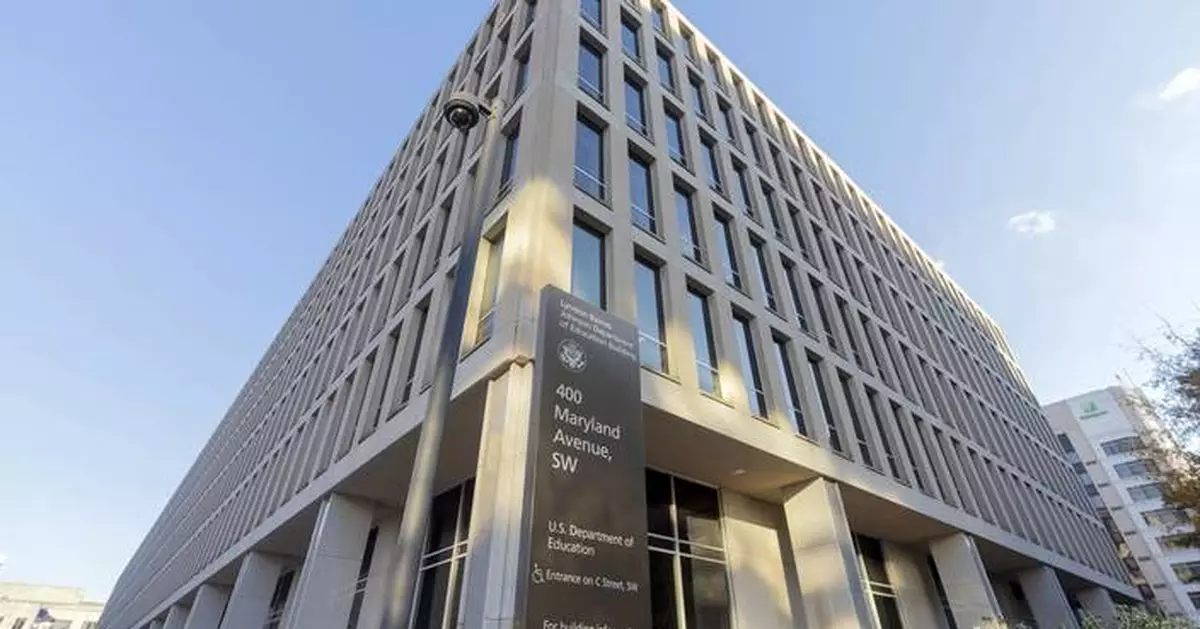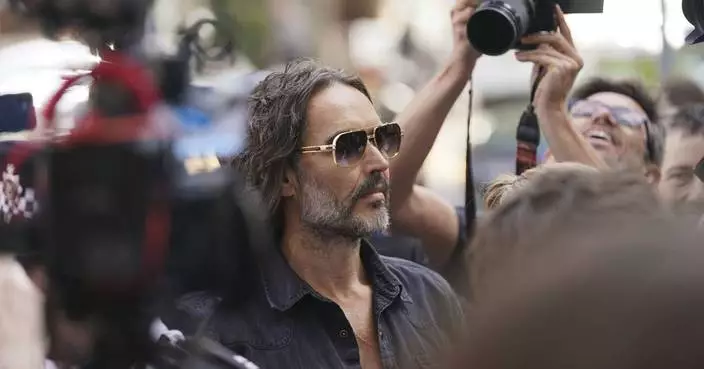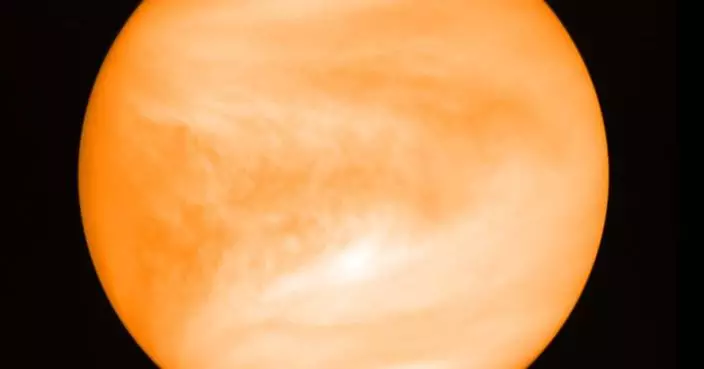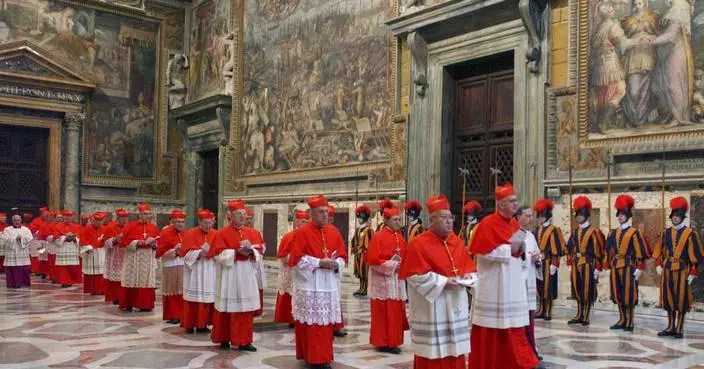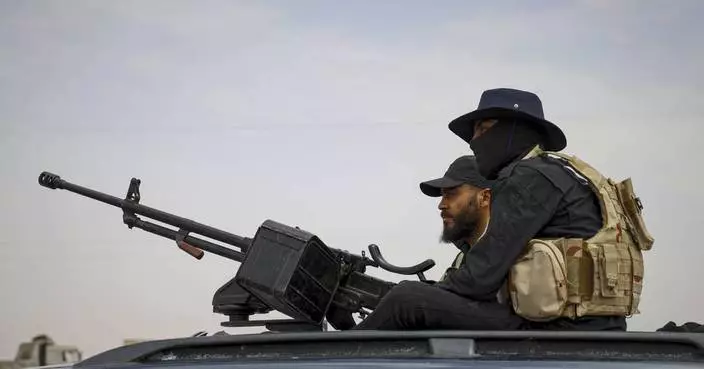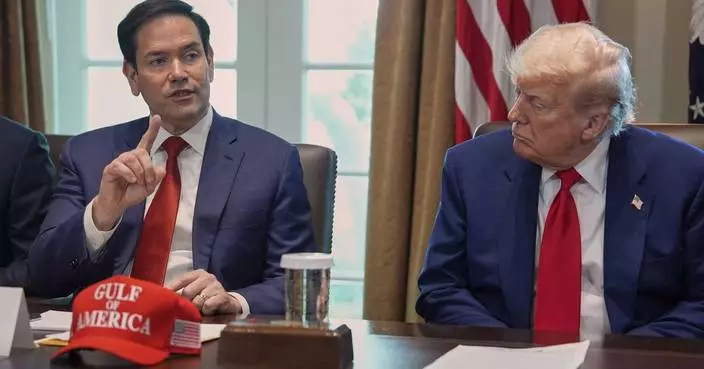NEW YORK (AP) — Starting next month, the Education Department says student loans that are in default will be referred for collections.
Roughly 5.3 million borrowers are in default on their federal student loans and soon could be subject to having their wages garnished.
Referrals for collection had been put on hold since March 2020 because of the COVID-19 pandemic, when the U.S. government also paused federal student loan payments and interest accrual as a temporary relief measure. That grace period was extended multiple times by the Biden administration and ended in October.
One of the borrowers facing more severe consequences is Kat Hanchon, who works in higher education information technology in Michigan.
“My stomach dropped immediately as soon as I read (the news),” said Hanchon, 33. “I wanted to throw up because I already live paycheck to paycheck.”
Hanchon said she owes nearly $85,000 in debt between their undergraduate and master’s degrees. And even with an income-driven repayment plan, Hanchon said she could not afford to pay those loans off on top of other expenses including a mortgage and medical bills.
The last time Hanchon remembers being able to make a student loan payment was September 2024. “I couldn’t even afford the like $55 that they were trying to charge me ... because it’s that tight of a budget,” she said.
The department says it will soon begin sending notices on collection efforts, but there are options for borrowers to get out of default.
Here are some key things to know.
Beginning May 5, the department will begin involuntary collection through the Treasury Department’s offset program. Borrowers who have student loans in default will receive communication from Federal Student Aid in the upcoming weeks with information about their options, according to the Education Department.
Involuntary collection means the government can garnish wages, intercept tax refunds and seize portions of Social Security checks and other benefit payments to go toward paying back the loan.
A student loan becomes delinquent when a borrower doesn't make a payment 90 days after its due date. If you continue to be delinquent on your loan for 270 days — or roughly nine months — then your loan goes into default.
While being delinquent affects your credit score, going into default has more serious consequences such as wage garnishment.
When you fall behind on a loan by 270 days, the loan appears on your credit report as being in default. Once a loan is in default the government will send the borrower into collections.
The Education Department is recommending borrowers visit its Default Resolution Group to make a monthly payment, enroll in an income-driven repayment plan, or sign up for loan rehabilitation.
Betsy Mayotte, president of The Institute for Student Loan Advisors, recommends loan rehabilitation as an option.
Borrowers in default must ask their loan servicer to be placed into such a program. Typically, servicers ask for proof of income and expenses to calculate a payment amount. Once a borrower has paid on time for nine months in a row, they are taken out of default, Mayotte said. A loan rehabilitation can only be done once.
Student loan forbearance is a temporary pause on your student loan payments granted to borrowers who are experiencing financial difficulties. To apply for forbearance, borrowers must contact their loan servicer.
Borrowers can be granted forbearance by their loan servicer for up to 12 months but interest will continue to accrue during this period.
Forbearance is not an option for borrowers whose student loans are in default. However, they are an option if you are delinquent on your loan.
Borrowers need to know the status of their student loans in order to find out if they are in default, said Kate Wood, student loans expert at NerdWallet.
To find the status of a student loan and their loan servicer information, borrowers need to access their studentaid.gov account. Since the Education Department is going to send notices about involuntary collections through email, borrowers want to make sure all their personal information is updated such as email and physical address, Wood recommended.
Yes, benefits from Social Security are considered income and can be affected by involuntary collections.
Borrowers who are delinquent on their student loans take a massive hit on their credit scores, said Wood. Those who are delinquent on their student loans might see a drop of one hundred points or more to their credit score. A delinquency stays on your credit report for seven years.
Credit scores are used in many aspects of people's financial lives such as access to credit cards, buying a house or renting an apartment.
Income-driven repayment plans applications are currently open. These plans base your monthly student loan payment amount on your income and family size.
The Biden administration's SAVE program is no longer open for applications since it was challenged in court. However, those who got accepted into the SAVE program are currently in administrative forbearance, meaning they don't have to make payments.
To review income-driven repayment plan options, you can check the loan simulator at studentaid.gov.
The Associated Press receives support from Charles Schwab Foundation for educational and explanatory reporting to improve financial literacy. The independent foundation is separate from Charles Schwab and Co. Inc. The AP is solely responsible for its journalism.
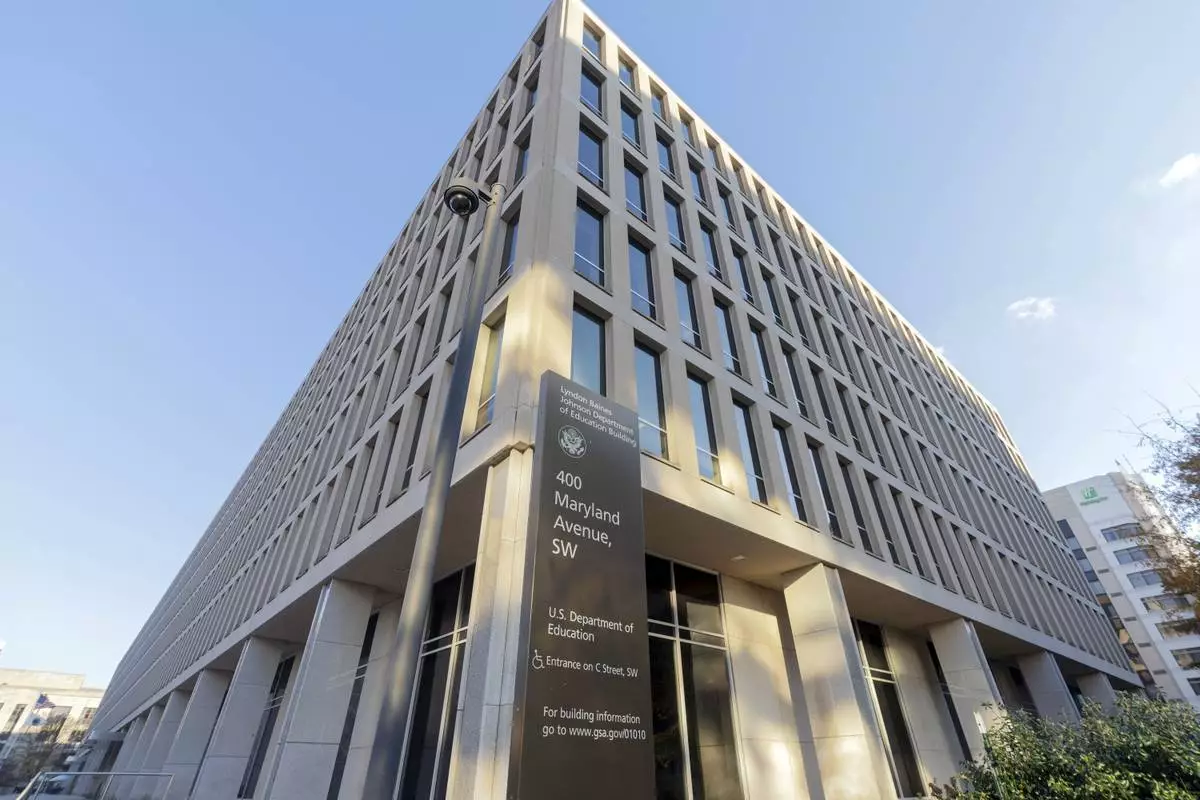
FILE - The U.S. Department of Education building is seen in Washington, Dec. 3, 2024. (AP Photo/Jose Luis Magana, File)
VATICAN CITY (AP) — Preparations for the conclave to find a new pope accelerated Friday with the installation of the chimney out of the Sistine Chapel that will signal the election of a successor to Pope Francis.
Vatican firefighters were seen on the roof of the Sistine Chapel installing the chimney, a key moment in the preparation for the May 7 conclave.
After every two rounds of voting in the Sistine Chapel, the ballots of the cardinals are burned in a special furnace to indicate the outcome to the outside world.
If no pope is chosen, the ballots are mixed with cartridges containing potassium perchlorate, anthracene (a component of coal tar) and sulfur to produce black smoke. But if there is a winner, the burning ballots are mixed with potassium chlorate, lactose and chloroform resin to produce the white smoke.
The white smoke came out of the chimney on the fifth ballot on March 13, 2013, and Cardinal Jorge Mario Bergoglio was introduced to the world as Pope Francis a short time later from the loggia of St. Peter's Basilica. Francis, history's first Latin American pope, died April 21 at age 88.
The chimney installation took place as cardinals arrived in the Vatican for another day of pre-conclave discussions about the needs of the Catholic Church going forward and the type of pope needed to run it.
These consultations include all cardinals, including those over age 80 who are ineligible to vote in the conclave itself.
In recent days, they have heard reports about the Vatican’s dire financial situation, and have had the chance to speak individually about priorities going forward and problems they identified in Francis' pontificate.
Francis was a somewhat divisive pope, beloved by some for his focus on the poor and marginalized, but criticized by others who accused him of sowing confusion among the faithful on issues of morality and church law. These conservatives and traditionalists, who are not believed to have a majority among the 135 cardinal electors, are hoping a new pope will reassert core church teachings and act as a stabilizing figure in the Vatican bureaucracy.
Cardinal Beniamino Stella, who headed the Vatican office for clergy under Francis until his retirement in 2021, has been among the older, non-voting cardinals who has spoken during the pre-conclave sessions. According to America, the magazine of the U.S. Jesuits, Stella this week strongly criticized Francis’ reform of the Vatican bureaucracy that allowed women and lay people to head Holy See offices rather than clergy.
That reform, contained in a 2022 constitution, overhauled the Vatican bureaucracy and fulfilled a key mandate Francis received from cardinals going into the 2013 conclave that elected him pope. But some have criticized the reform, which was nine years in the works and sought to make the Holy See more service-oriented and efficient.
Francis named two laymen to head the Vatican communications operation and the economy ministry. More significantly, he named two nuns to head two of the most important Vatican offices: Sister Simona Brambilla as head of the Vatican office responsible for all the world’s Catholic religious orders, and Sister Raffaella Petrini as head of the Vatican City State administration. In that position, Petrini runs the city state and is responsible for everything from the Vatican Museums that provide the Holy See with most of its revenue, to the firefighters who installed the chimney on the Sistine Chapel Friday.
Their appointments were tangible evidence of Francis’ belief that women should have a greater decision-making role in church governance. But Stella, according to unnamed cardinals cited by America, objected to Francis’ decision to separate the power of governance in the church from the priesthood.
It is unclear what influence older cardinals such as Stella, who at age 83 will not actually cast a vote, will have on the younger cardinal electors.
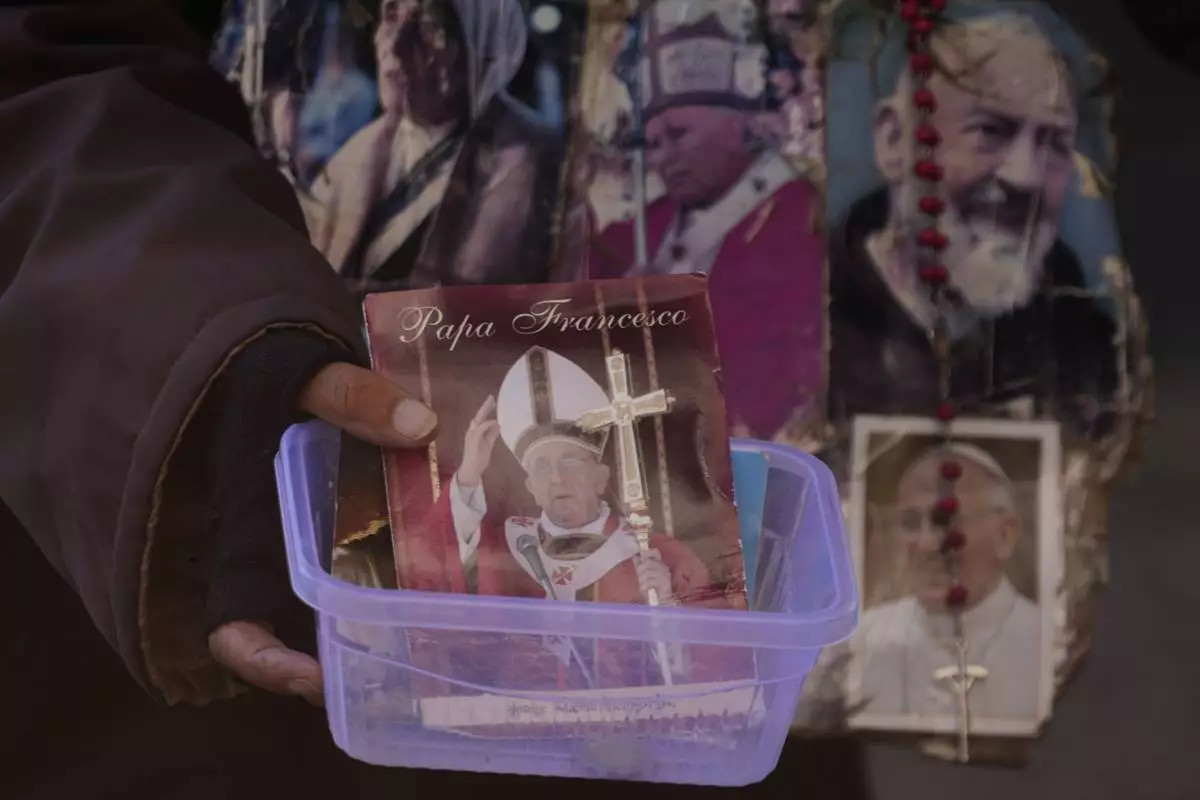
A woman begs for money outside St. Peter's square at the Vatican, Friday, May 2, 2025. (AP Photo/Gregorio Borgia)
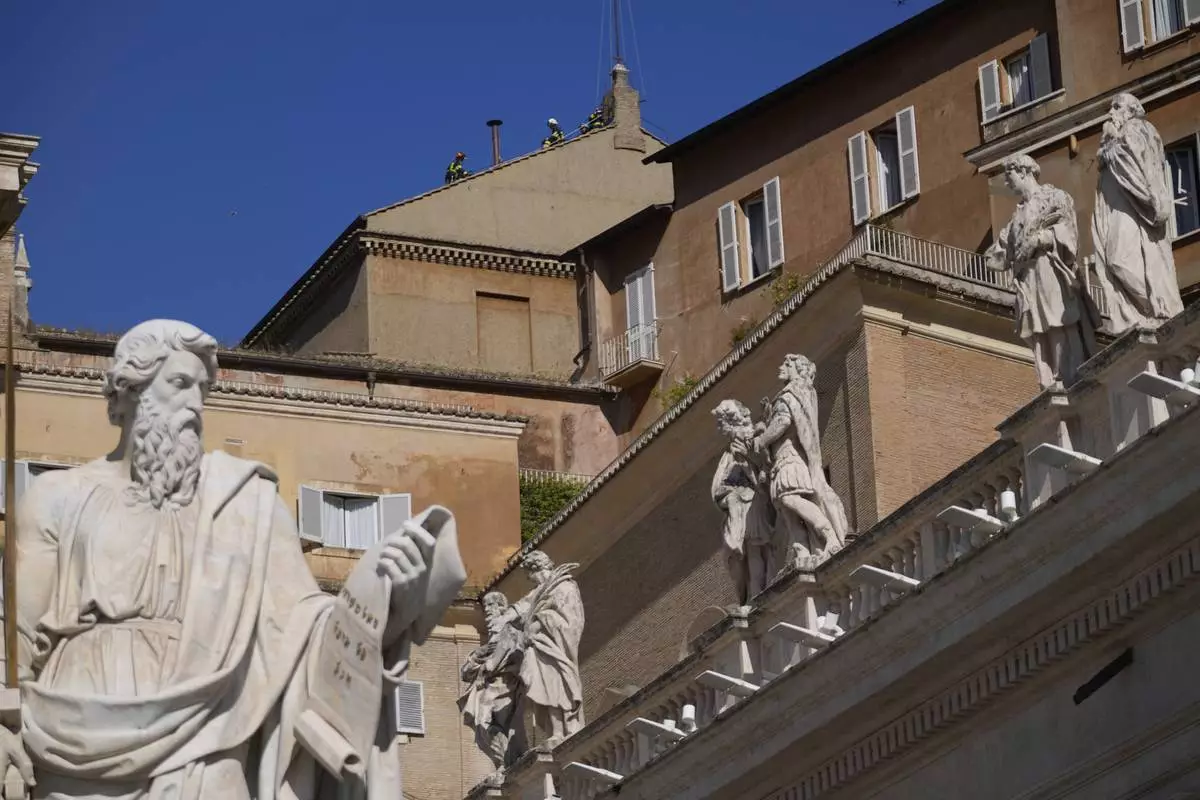
Firefighters place the chimney on the roof of the Sistine Chapel, where cardinals will gather to elect the new pope, at the Vatican, Friday, May 2, 2025. (AP Photo/Gregorio Borgia)

Firefighters place the chimney on the roof of the Sistine Chapel, where cardinals will gather to elect the new pope, at the Vatican, Friday, May 2, 2025. (AP Photo/Gregorio Borgia)
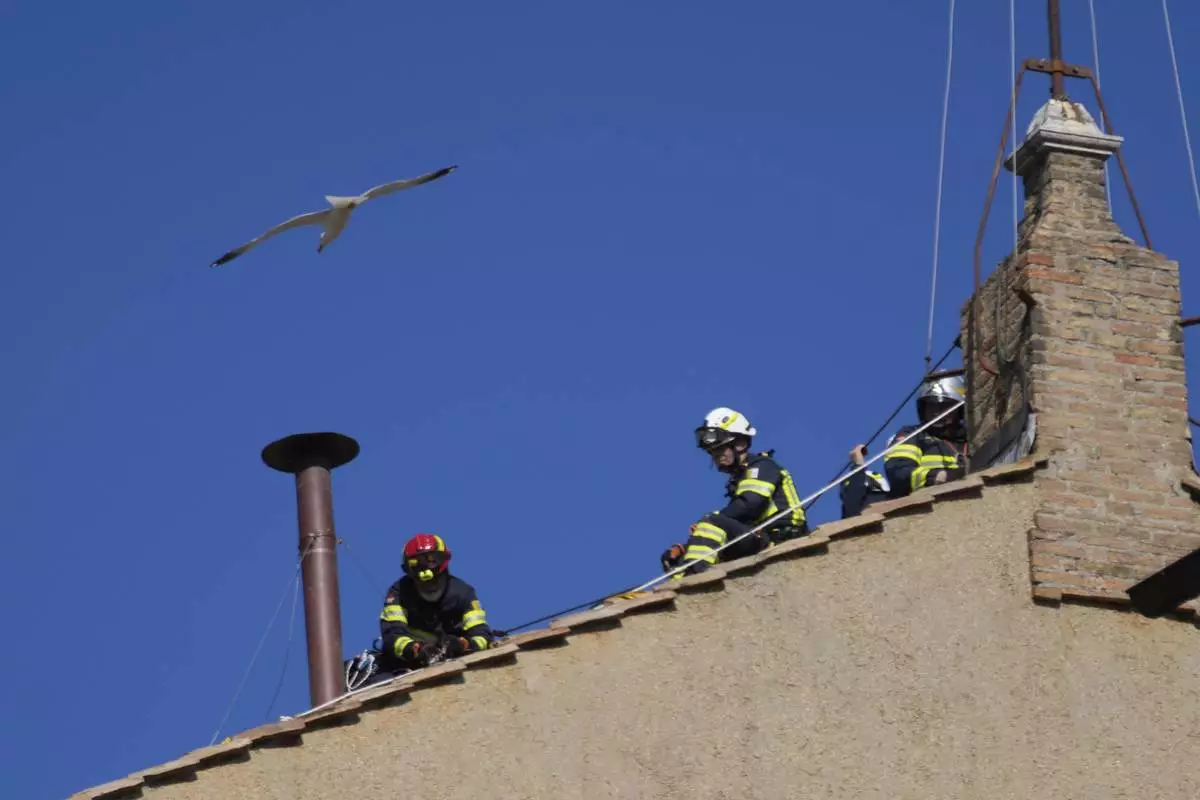
Firefighters place the chimney on the roof of the Sistine Chapel, where cardinals will gather to elect the new pope, at the Vatican, Friday, May 2, 2025. (AP Photo/Gregorio Borgia)
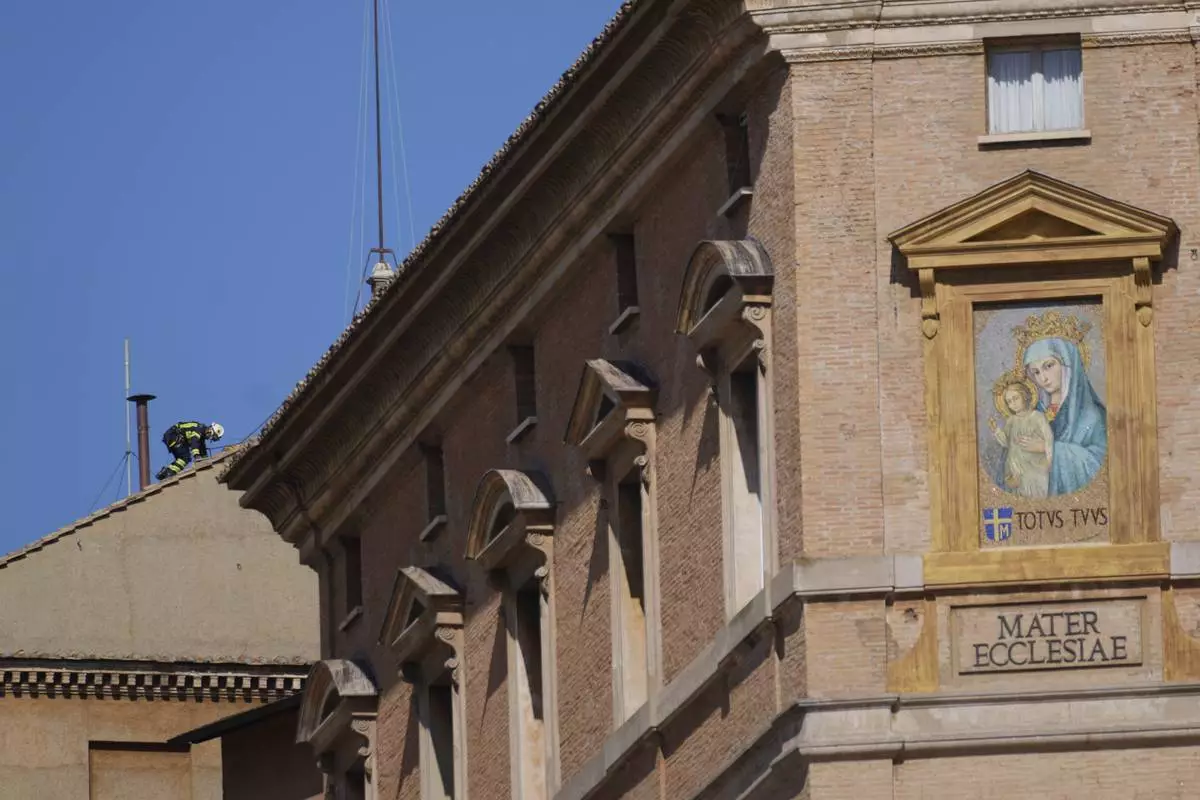
Firefighters place the chimney on the roof of the Sistine Chapel, where cardinals will gather to elect the new pope, at the Vatican, Friday, May 2, 2025. (AP Photo/Gregorio Borgia)
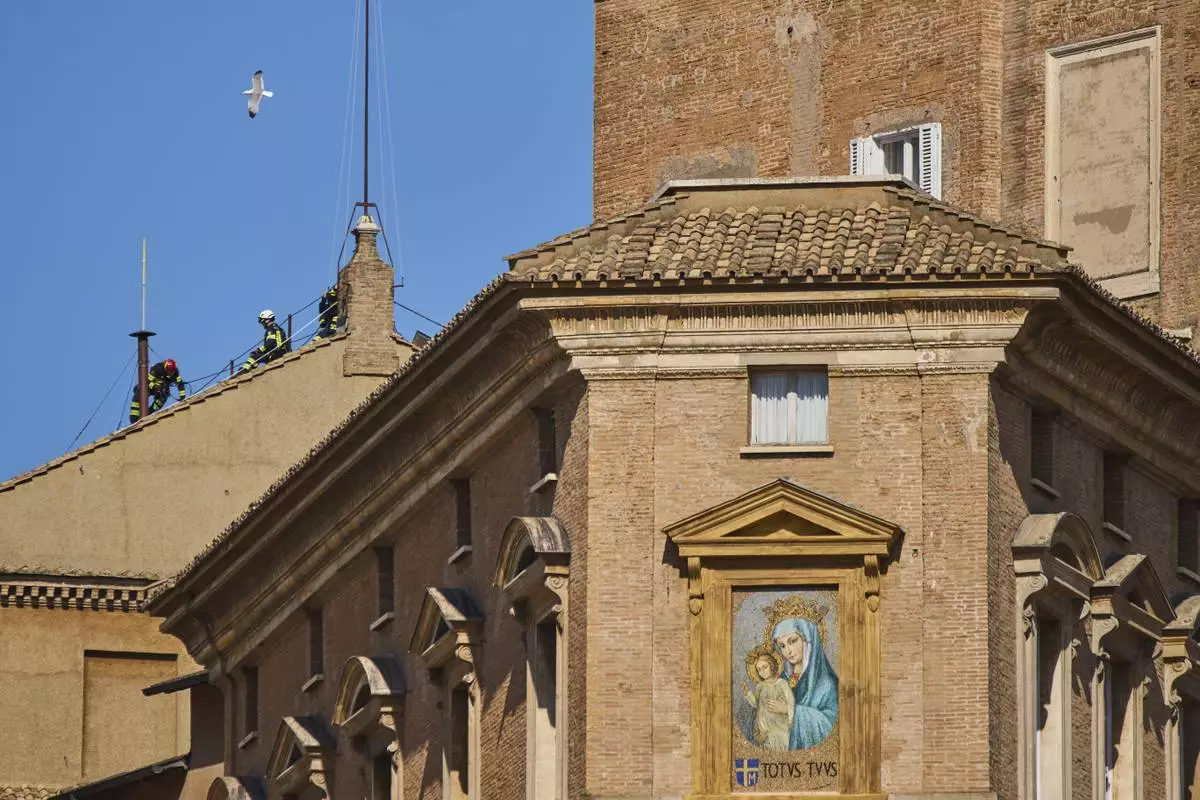
Firefighters place the chimney on the roof of the Sistine Chapel, where cardinals will gather to elect the new pope, at the Vatican, Friday, May 2, 2025. (AP Photo/Bernat Armangue)

Firefighters place the chimney on the roof of the Sistine Chapel, where cardinals will gather to elect the new pope, at the Vatican, Friday, May 2, 2025. (AP Photo/Bernat Armangue)
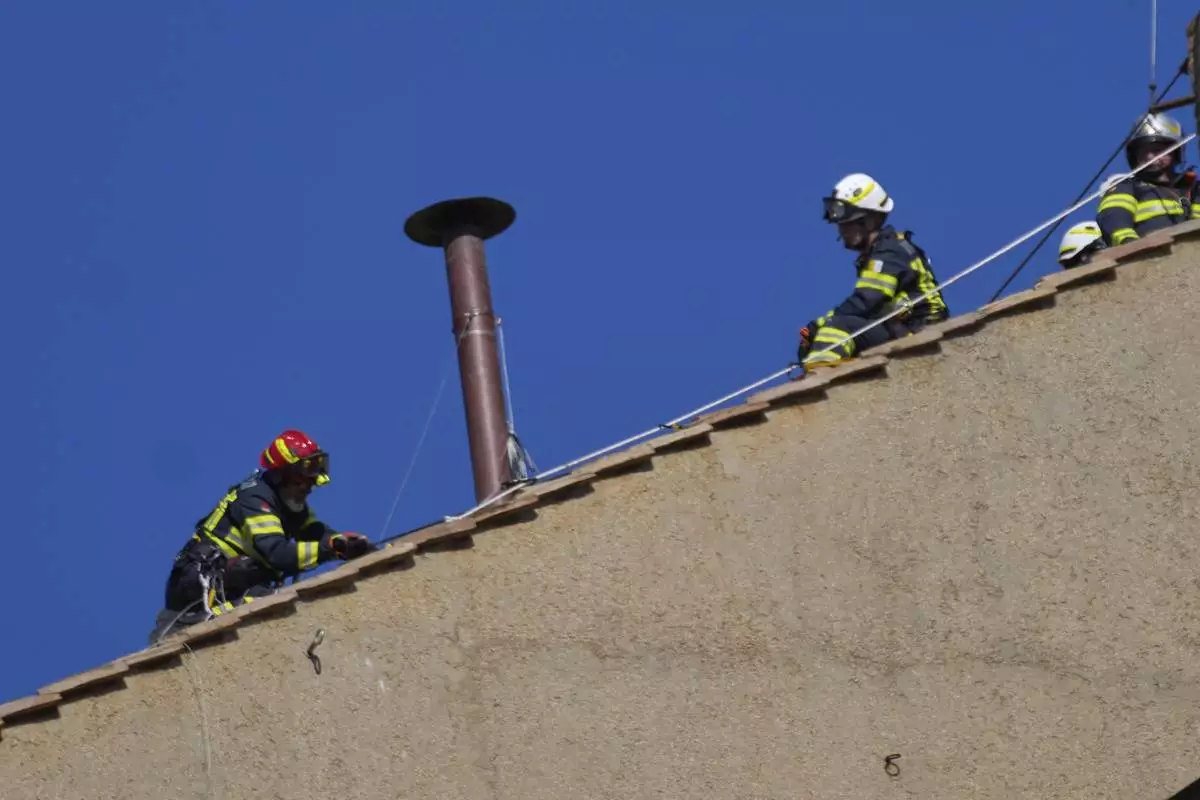
Firefighters place the chimney on the roof of the Sistine Chapel, where cardinals will gather to elect the new pope, at the Vatican, Friday, May 2, 2025. (AP Photo/Gregorio Borgia)
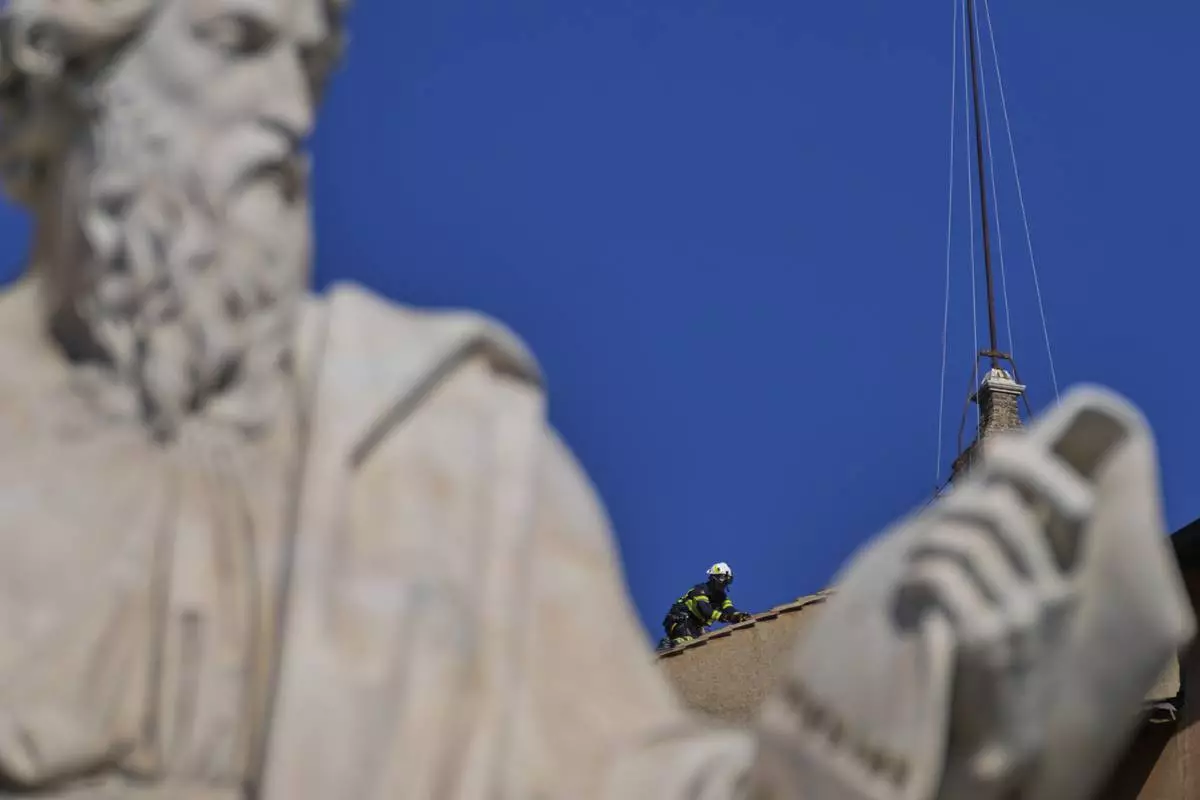
Firefighters place the chimney on the roof of the Sistine Chapel, where cardinals will gather to elect the new pope, at the Vatican, Friday, May 2, 2025. (AP Photo/Gregorio Borgia)
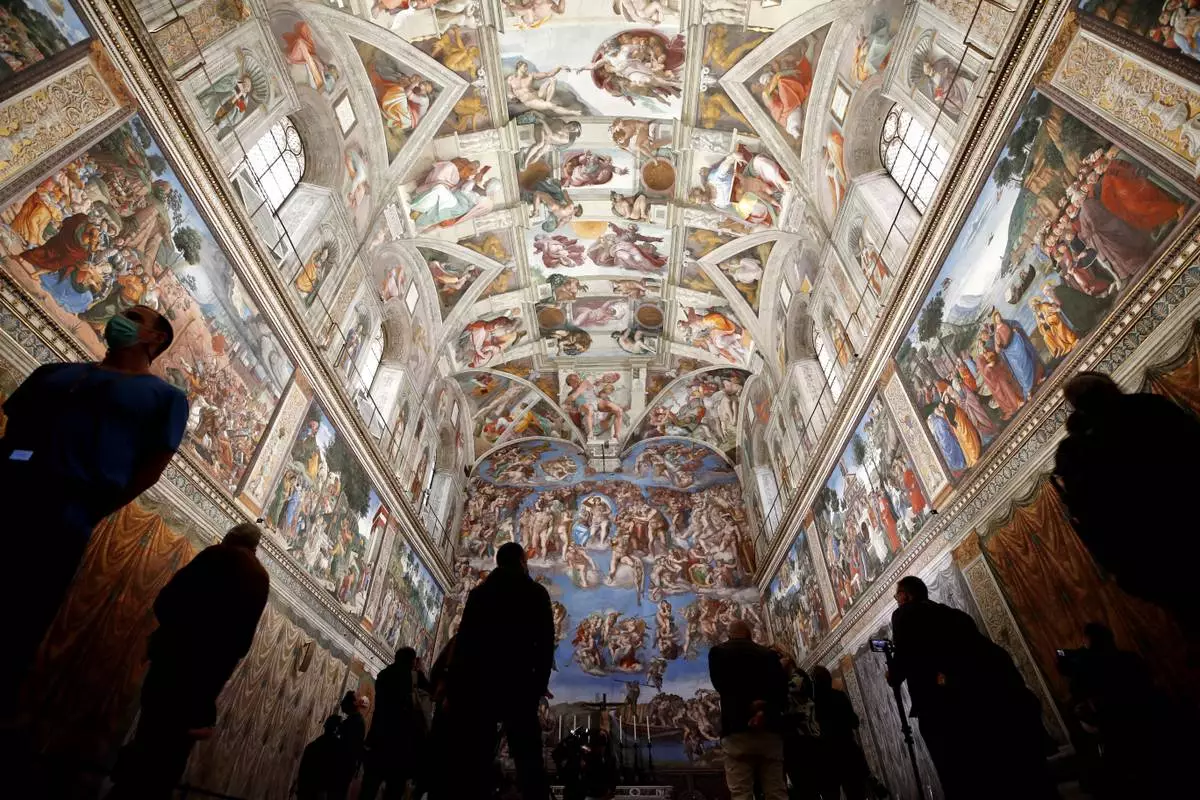
FILE - Visitors admire the Sistine Chapel inside the Vatican Museums on the occasion of the museum's reopening, in Rome, May 3, 2021. (AP Photo/Alessandra Tarantino, file)



